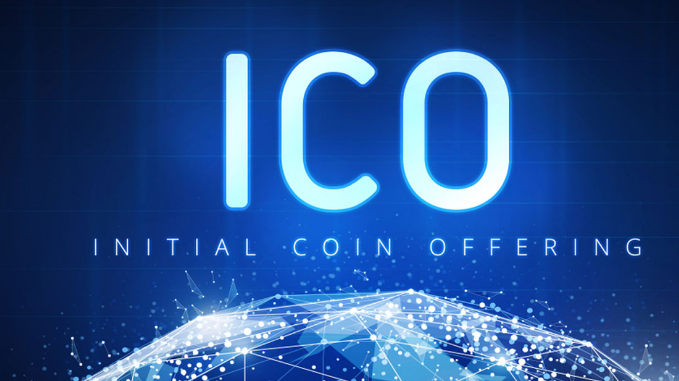How to Develop an ICO (Initial Coin Offering) for Your Cryptocurrency
Introduction: The Role of ICOs in Cryptocurrency Projects
Initial Coin Offerings (ICOs) have become a popular fundraising mechanism in the cryptocurrency world. They allow developers and startups to raise capital for their cryptocurrency projects by issuing new tokens to early investors, often in exchange for established cryptocurrencies like Bitcoin or Ethereum. ICOs have helped numerous blockchain projects secure the funds needed to launch their platforms, but they also come with significant challenges and regulatory hurdles. This article will guide you through the process of developing a successful ICO, highlighting key considerations, best practices, and steps to ensure a smooth launch.
1. Understanding ICOs: What They Are and How They Work
An ICO is a fundraising method where a project team sells a percentage of their newly issued cryptocurrency tokens to early backers in exchange for capital. The funds raised through the ICO are typically used to further develop the project and achieve its goals.
Key Components of an ICO:
- Whitepaper: The whitepaper is the backbone of any ICO. It outlines the project’s mission, technology, tokenomics, and business model. It should provide investors with a clear understanding of the project and its potential for growth.
- Token Issuance: ICOs issue a specific number of tokens, which can represent various things, such as a stake in the project, a claim to future profits, or access to certain services.
- Sale Period: The ICO has a set period during which tokens are available for purchase. Early investors often receive discounted tokens to incentivize participation.
- Funds Raised: ICOs often raise funds in major cryptocurrencies like Bitcoin (BTC) or Ethereum (ETH), although some projects have used stablecoins or their own native tokens.
2. Legal and Regulatory Considerations for an ICO
Before launching an ICO, it’s crucial to understand the legal landscape surrounding cryptocurrency fundraising. Regulatory requirements vary by jurisdiction, and failing to comply with the law can result in fines, penalties, or even the cancellation of the ICO.
Legal Factors to Consider:
- Securities Laws: In many countries, ICO tokens may be classified as securities, which means they are subject to specific regulations under financial securities laws. It’s important to assess whether your token qualifies as a security and to adhere to relevant rules.
- Know Your Customer (KYC) and Anti-Money Laundering (AML): ICOs are often required to implement KYC and AML procedures to prevent illegal activities, such as money laundering and fraud. These processes verify the identity of participants and ensure that the funds raised are not used for illicit purposes.
- International Compliance: ICOs typically have global participants, so it’s important to ensure that your project complies with the regulations in each jurisdiction you intend to target. Different countries have varying rules regarding ICOs, and some may even prohibit them entirely.
- Legal Advisors: It is highly recommended to consult with legal professionals who specialize in cryptocurrency and blockchain regulations to navigate the complex legal environment surrounding ICOs.
3. Preparing for the ICO: Key Preparations and Strategy
Launching a successful ICO requires careful planning and preparation. It’s essential to build a strong foundation before the ICO begins to ensure its success and credibility.
Steps to Prepare for an ICO:
- Develop a Strong Business Plan: A detailed business plan should outline the goals of your cryptocurrency project, how the raised funds will be used, and the long-term vision of the platform. This plan will serve as a roadmap for your project and should be communicated clearly to investors.
- Assemble a Skilled Team: A successful ICO is backed by a strong team of developers, marketers, and advisors. Ensure that your team has the necessary skills and experience to build and promote the project effectively.
- Create a Compelling Whitepaper: The whitepaper is one of the most important components of your ICO. It should provide a detailed explanation of the project, including the problem it aims to solve, the technology behind it, the tokenomics, and how the funds will be allocated. A well-written whitepaper will inspire confidence in potential investors and give them a clear understanding of the value proposition.
- Build a Community: A successful ICO relies on a strong community of supporters. Before the launch, start building a community on social media platforms, forums, and messaging groups to generate excitement and interest in the project. Community engagement helps ensure that your ICO has a strong pool of potential investors.
- Develop a Marketing Strategy: A solid marketing campaign is essential to ensure the success of your ICO. This includes creating a website, engaging in social media marketing, attending blockchain conferences, and utilizing paid ads and influencer partnerships to increase visibility.
4. Creating Your Token: The Technical Aspects
The next step is to create the cryptocurrency token that will be offered in the ICO. This requires selecting a blockchain platform, defining the token’s features, and deploying the smart contract.
Steps to Create Your ICO Token:
- Choose a Blockchain Platform: Ethereum is the most widely used blockchain for ICOs due to its support for smart contracts and token standards like ERC-20. However, you can also choose other blockchain platforms such as Binance Smart Chain (BSC), Solana, or Polkadot, depending on your project’s needs.
- Decide on Tokenomics: Tokenomics refers to the economics behind your token, including the total supply, distribution, and utility. Consider how many tokens will be issued, how they will be distributed among investors, the team, and advisors, and whether any tokens will be reserved for future development or incentives.
- Smart Contract Development: Smart contracts are self-executing contracts that automate token issuance and distribution. It’s important to write secure and efficient smart contracts to prevent vulnerabilities and ensure that tokens are distributed according to the plan. You can either develop your own smart contract or use established templates from platforms like OpenZeppelin to avoid common pitfalls.
- Testing: Before deploying the smart contract on the mainnet, test it thoroughly on testnets to ensure that it functions as expected. Testing helps identify bugs and vulnerabilities that could lead to issues during the ICO.
5. Running the ICO: Managing the Sale and Investor Participation
Once the preparations are complete, it’s time to launch the ICO. Managing the sale process efficiently and securely is crucial to maintaining trust and ensuring the smooth flow of funds.
Managing the ICO Sale:
- Set Token Price and Discounts: Decide on the price of your token and any discounts or bonuses for early investors. Many ICOs offer lower prices for the initial rounds to encourage early participation.
- Establish a Transparent Fundraising Goal: Clearly communicate your fundraising target and the milestones you aim to achieve with the funds raised. Transparency builds trust with investors.
- Secure Payment Channels: Ensure that payments for tokens are processed securely. Accept popular cryptocurrencies like Bitcoin, Ethereum, or stablecoins, and make sure that the payment process is user-friendly and secure.
- Track and Communicate Progress: Provide regular updates on the progress of the ICO, including how much has been raised, the number of tokens sold, and how funds will be allocated. Transparency and clear communication with investors are essential for maintaining credibility.
6. Post-ICO: Token Listing and Ongoing Development
Once the ICO is completed, your project enters a new phase. Now, it’s time to ensure that the funds are put to good use and that your cryptocurrency is listed on exchanges for trading.
Post-ICO Steps:
- Token Listing on Exchanges: After the ICO, you will need to list your token on cryptocurrency exchanges. Listing your token on both decentralized exchanges (DEXs) like Uniswap and centralized exchanges (CEXs) like Binance will increase its liquidity and make it accessible to a wider audience.
- Ongoing Development: The ICO is just the beginning. Use the funds raised to continue developing the platform, release new features, and enhance security. Regularly update investors on the progress of the project.
- Community Engagement: Continue engaging with your community to keep the momentum going. Hold regular AMAs (Ask Me Anything), share progress updates, and listen to feedback to improve the project.
Conclusion: Successfully Navigating the ICO Landscape
Developing and launching an ICO can be a highly rewarding endeavor, offering the opportunity to raise capital for your cryptocurrency project while involving the community in the development process. However, it requires careful planning, legal considerations, and strong marketing efforts to succeed. By following the steps outlined above and focusing on transparency, security, and community engagement, you can create an ICO that resonates with investors and sets the stage for the success of your cryptocurrency project.

Also Read :
